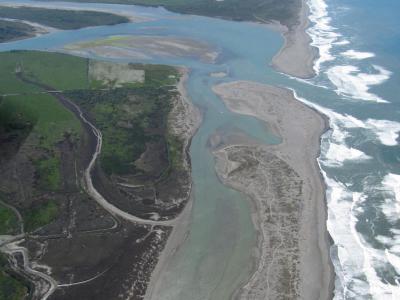Eel River Biology: Salmonids, Sturgeon, Lamprey, and Multi-species Planning
Session Coordinator:
Patrick Higgins, Eel River Recovery Project
The Eel River is a fascinating Wild and Scenic river, but it has been under severe ecological stress due to prolonged drought and the cumulative effects of human land use in the watershed. As the flows of the Eel River have diminished, its algal community has shifted from one dominated by green algae species that are the base of a healthy food web, to one that has more prevalent cyanobacteria, including toxic species. Various Pacific salmon species are responding to the drought differently due to variable life histories. Chinook salmon are less reliant on freshwater habitat than steelhead trout and coho and appear to be maintaining a healthy population level. UC research teams are looking at two very interesting questions: how steelhead juveniles use the mouths of cool water creeks and whether the California roach is native or introduced. This session will focus on stresses to salmonids including pikeminnow, other non-native species, as well as multi-species planning and habitat within the Eel river.
The Distribution of Anadromy Versus Residency in Oncorhynchus mykiss in the Eel River
Bret Harvey, U.S. Forest Service Redwood Sciences Lab, Arcata, CA,
Life History, Distribution, and Ecology of Pacific Lamprey in the Eel River
Abel Brumo, Stillwater Sciences
Green Sturgeon of the Eel River
Joshua Strange, Ph.D., Stillwater Sciences
Gauging Eel River Fall Chinook Abundance Through Citizen Assisted Monitoring
Pat Higgins, Eel River Recovery Project
The Influence of Natural Barriers on the Distribution of Steelhead and Rainbow Trout in Tributaries of the South Fork Eel River
Suzanne Kelson, UC Berkeley
Wild Fish of Southern Humboldt and Mendocino- What the Coastal Monitoring Program Partnership has Learned from Five Years of South Fork Eel River Coho Spawning Abundance Surveys
Brian Starks Pacific States Marine Fisheries Commission and Allan Renger, CDFW

